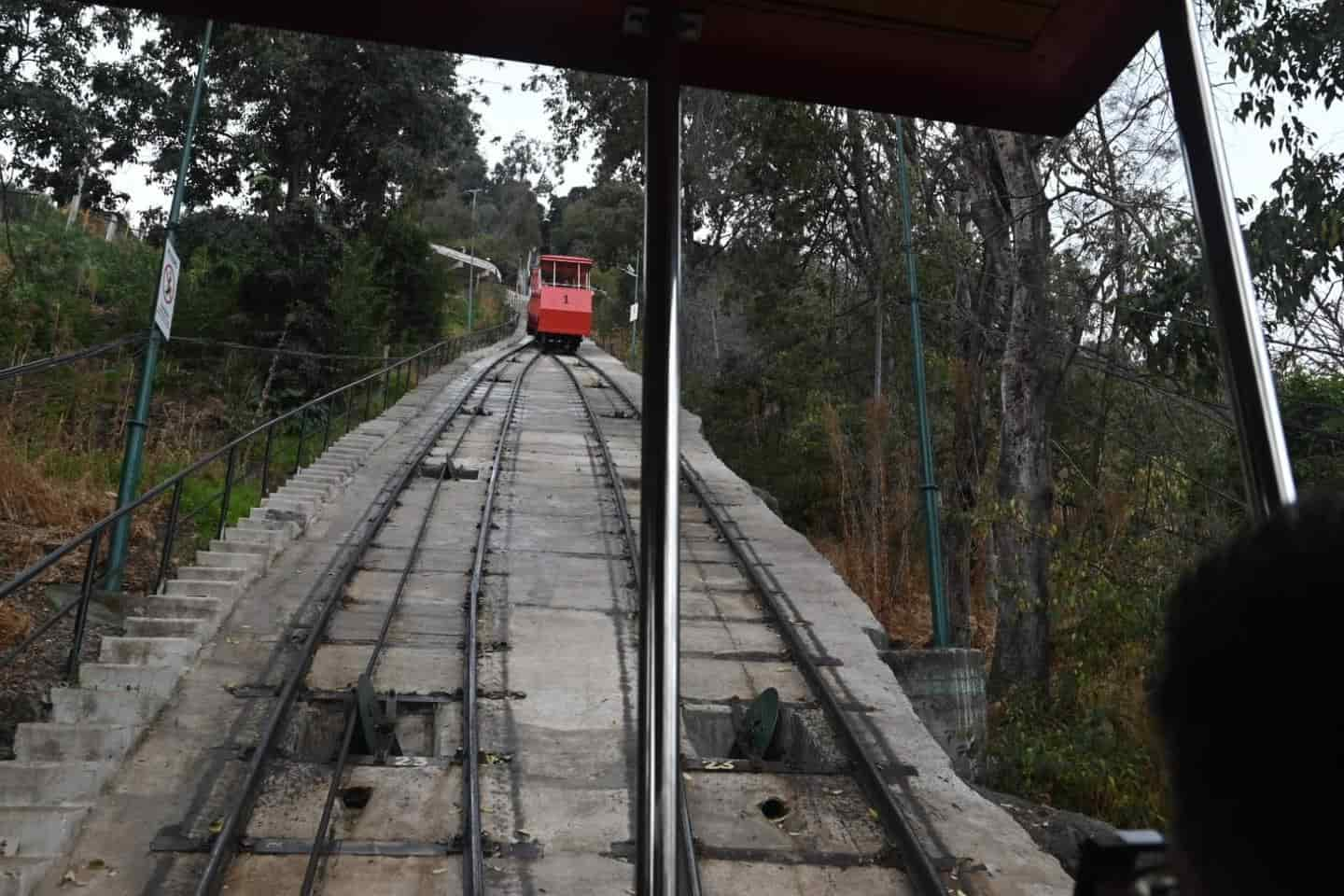The funicular of Santiago’s Metropolitan Park (Parquemet) has just celebrated a major milestone: its 100th anniversary transporting Chileans and visitors alike. This iconic transportation system, nestled at the heart of the Chilean capital, has stood the test of time, maintaining its original operating system since it first opened in April 1925.
The funicular’s classic machine room still powers its operation, preserving a piece of Santiago’s historical engineering. Over the decades, however, it has also adapted to modern times with improvements for universal accessibility, such as a new ramp at the Pío Nono station and an elevator at the Cumbre station, ensuring that all visitors can enjoy the journey to the top of San Cristóbal Hill.
The centennial celebration was a significant event, attended by notable figures such as the Minister of the Interior, Álvaro Elizalde; the Minister of Housing, Carlos Montes; Andrea Medina, the acting director of Parquemet; and Ricardo Suárez, the manager of the tourism company Turistik.
During the ceremony, Minister Carlos Montes emphasized the importance of public spaces like Parquemet in urban life. “Many urban life problems, such as security, are not only addressed through education in schools and families but also by promoting and developing places of community gathering like this one,” Montes stated. “Every year, Parquemet welcomes around 7 million visitors, and an additional 4.5 million visit other parks in the network. These spaces are an integral part of people’s lives, their coexistence, and their identity, so we must value them for all that they represent.”
Meanwhile, Minister Álvaro Elizalde reflected on the historic and emotional significance of the funicular. “It has maintained a long history in motion, centered around Parquemet, San Cristóbal Hill, and the surrounding hills. Without a doubt, it was a pioneering work in its time and remains deeply intertwined with the history of Santiago and the Metropolitan Region. It’s a place many of us have shared with our families,” he said.
A Century of Stories: The Funicular’s Rich Legacy
Declared a Historic Monument in 2000, the Parquemet funicular has completed an impressive 1,460,000 trips over the past century. The visionary behind this remarkable project was Alberto Mackenna, a former city Intendant and the nephew of renowned historian Benjamín Vicuña Mackenna. Alberto initiated the construction of the funicular in 1921, and it was finally inaugurated on April 25, 1925, during the presidency of Arturo Alessandri Palma.
The original carriages were imported from Milan, manufactured by the Ceretti and Tanfani company. Each carriage had a capacity of 50 passengers and was divided into first and second class. First-class passengers enjoyed roofs and seats, while second-class passengers had neither.
In 1968, the original wooden roof of the cars was replaced by one made of steel and fabric, similar to the design still seen today. Currently, the funicular operates a carriage that accommodates 40 passengers, covering a steep 500-meter route in approximately 7 to 10 minutes. Turistik, a private tourism company, manages the funicular’s operations today.
One remarkable fact is that since 1925, not a single part of the funicular’s main mechanical system has been replaced. The machine room, designed by architect Carlos de Landa, houses two massive gears lubricated with grease, two small driving pinions, two large braking pulleys, and a small emergency pulley—all essential for the system’s continued operation.
From a compact cabin inside the machine room, the operator controls the current flowing to the motor using a master control. They stay in constant communication with the conductors traveling with the passengers and use a steering wheel to manually apply brakes to the carriages at each station.
Stories That Live On
One of the funicular’s most memorable moments was when Gabriel Cáceres, a machinist who followed in his father’s footsteps, had the honor of transporting Pope John Paul II to the summit of San Cristóbal Hill during the Pope’s visit to Chile in 1987. Cáceres fondly recalls exchanging greetings and a few words with the Pontiff during that special ride.
Today, a one-way ticket to the summit costs 1,600 Chilean pesos on weekdays and 2,050 pesos on weekends. Round-trip tickets are priced at 2,250 pesos during the week and 2,950 pesos on weekends. The funicular operates from Tuesday to Sunday, from 10:00 a.m. to 6:45 p.m., and on Mondays from 1:00 p.m. to 6:45 p.m., remaining closed on the first Monday of each month for maintenance.
As Santiago continues to grow and evolve, the Parquemet funicular stands as a living piece of history, a testament to Chilean engineering, resilience, and the enduring spirit of community.



